
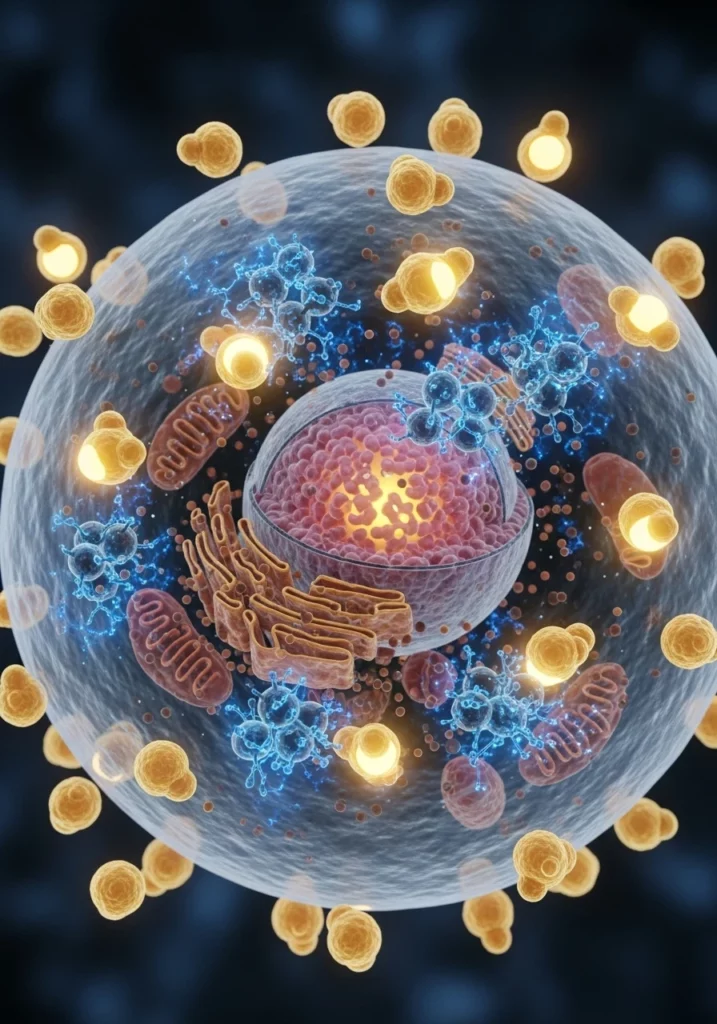
With age, our body loses the ability to effectively regulate inflammatory processes. This is not acute inflammation accompanied by fever or pain, but slow, “silent” low-grade inflammation — inflammaging.
It is precisely this process that underlies most age-related pathologies: cardiovascular, neurodegenerative, metabolic, and even oncological.
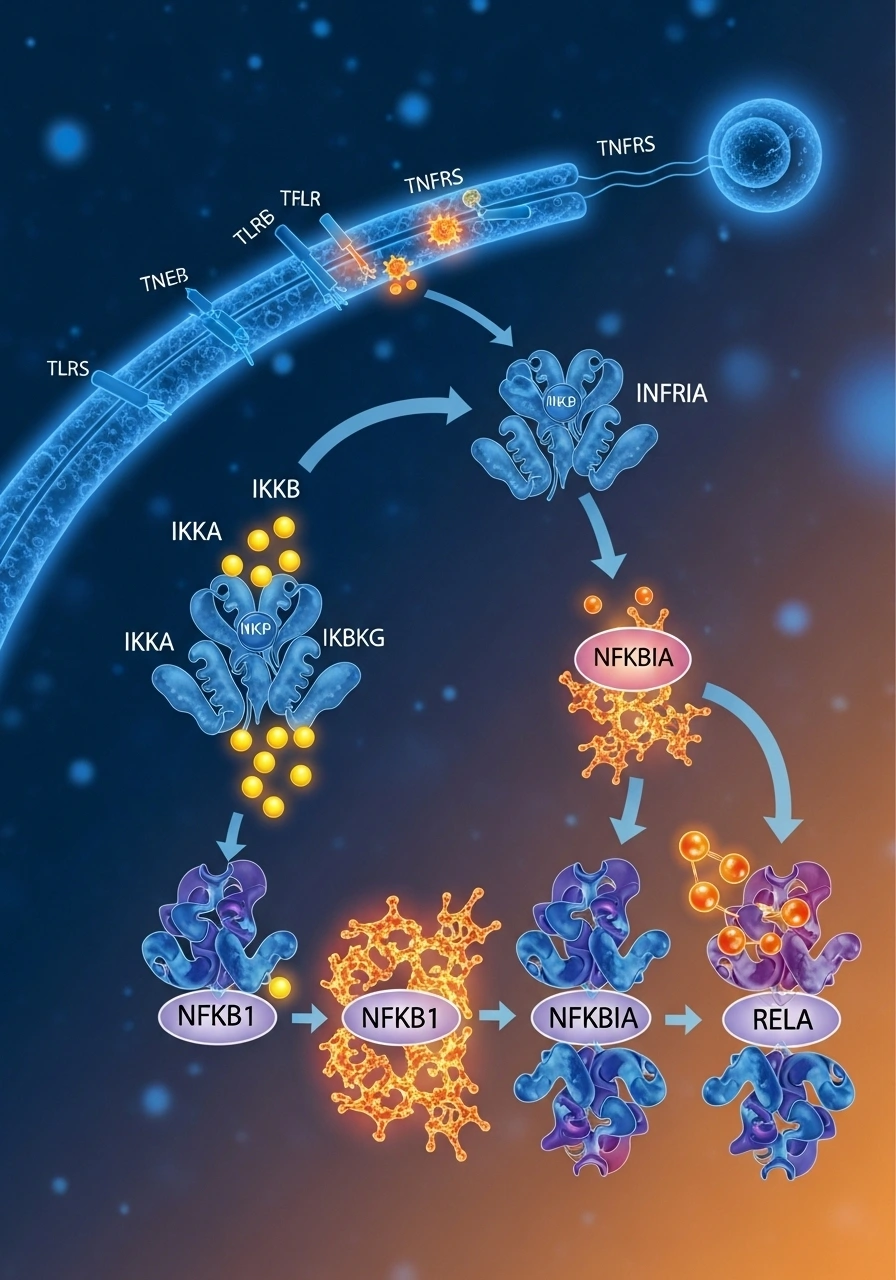
Today, nutraceuticals offer a comprehensive approach to inflammation control, targeting key signaling pathways — NF-κB, Nrf2, COX-2, TNF-α — and supporting cellular balance without the side effects associated with pharmaceutical drugs.
Biochemical basis of inflammaging
| Mechanism | What happens | Outcome |
|---|---|---|
| Chronic NF-κB activation | Persistent presence of cytokines IL-6, TNF-α | Reduced insulin sensitivity, atherogenesis |
| Oxidative stress | Excess of free radicals | Damage to proteins, DNA, lipids |
| Mitochondrial dysfunction | Reduced energy production | Amplification of inflammatory cascades |
| Immune exhaustion | Hyperactivation of macrophages and T cells | Reduced antiviral and antitumor defense |
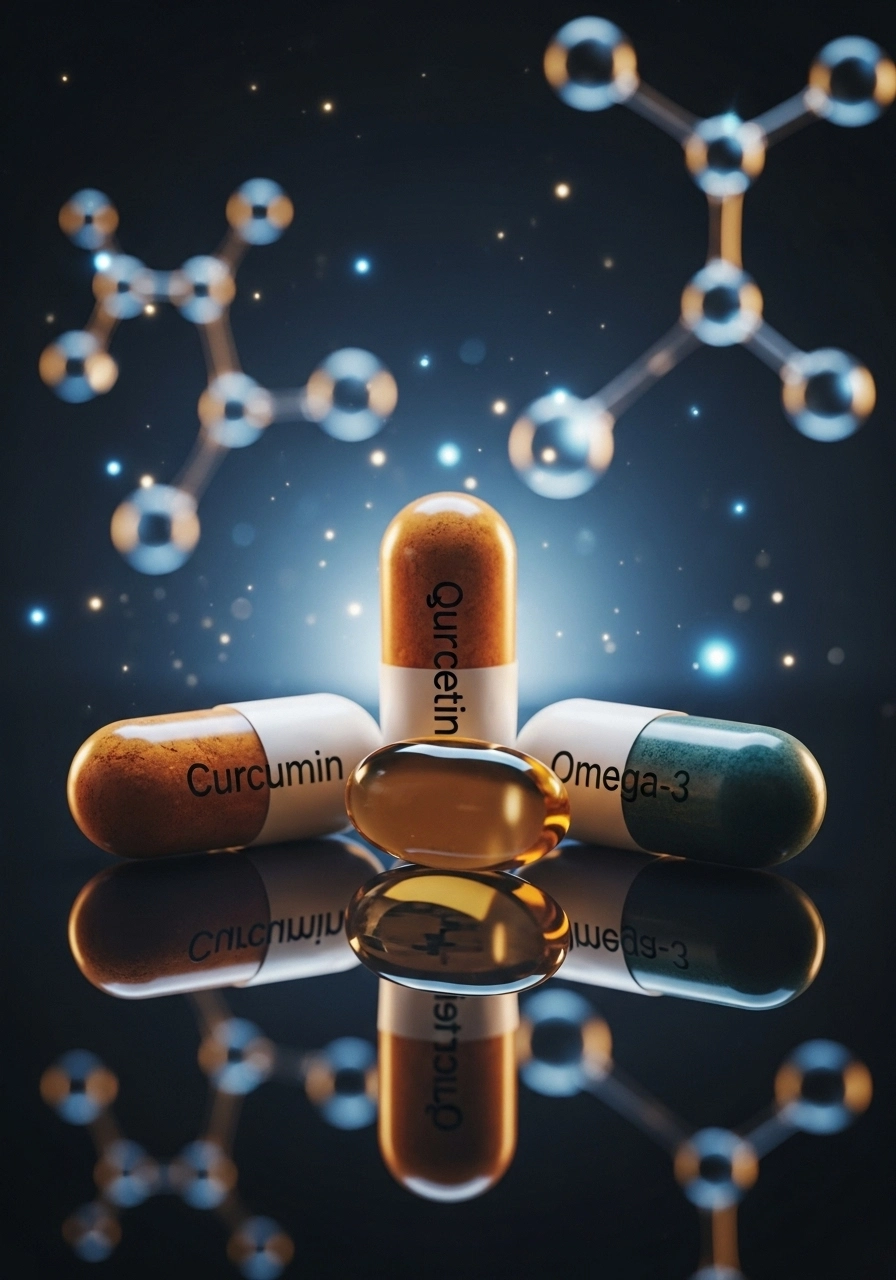
Main nutraceutical anti-inflammatory modulators
Curcumin — an active compound from turmeric that inhibits inflammatory signaling pathways NF-κB and the COX-2 enzyme. It exhibits strong antioxidant properties, reduces swelling, improves microcirculation, and supports tissue regeneration. Main sources — turmeric and turmeric-based supplements.
Quercetin — a natural flavonoid that modulates cytokine levels and suppresses the pro-inflammatory factor TNF-α. This protects vascular endothelium and reduces the risk of inflammatory processes in the cardiovascular system. Found in onions, apples, and capers.
Omega-3 fatty acids (EPA and DHA) — replace arachidonic acid in cell membranes and reduce prostaglandin synthesis involved in inflammation. As a result, pain decreases, joint health improves, and the risk of atherosclerosis is reduced. Main sources — marine fish and encapsulated supplements.
Selenium and glutathione — act synergistically by activating the antioxidant Nrf2 pathway and supporting detoxification of reactive oxygen species (ROS). This complex helps restore the body’s antioxidant status and supports liver health. Sources — nuts, eggs, and dietary supplements.
Resveratrol — a polyphenol that activates the longevity enzyme SIRT1 and suppresses the NF-κB inflammatory pathway. It improves metabolic profile, helps normalize blood sugar levels, and protects cells from aging. Found in grapes, wine, and peanuts.
EGCG (epigallocatechin-3-gallate) — the main polyphenol in green tea that inhibits MAPK and AP-1 signaling pathways responsible for inflammation and apoptosis. It has neuroprotective effects, enhances focus, and protects brain cells from oxidative stress. Main sources — green tea and standardized extracts.
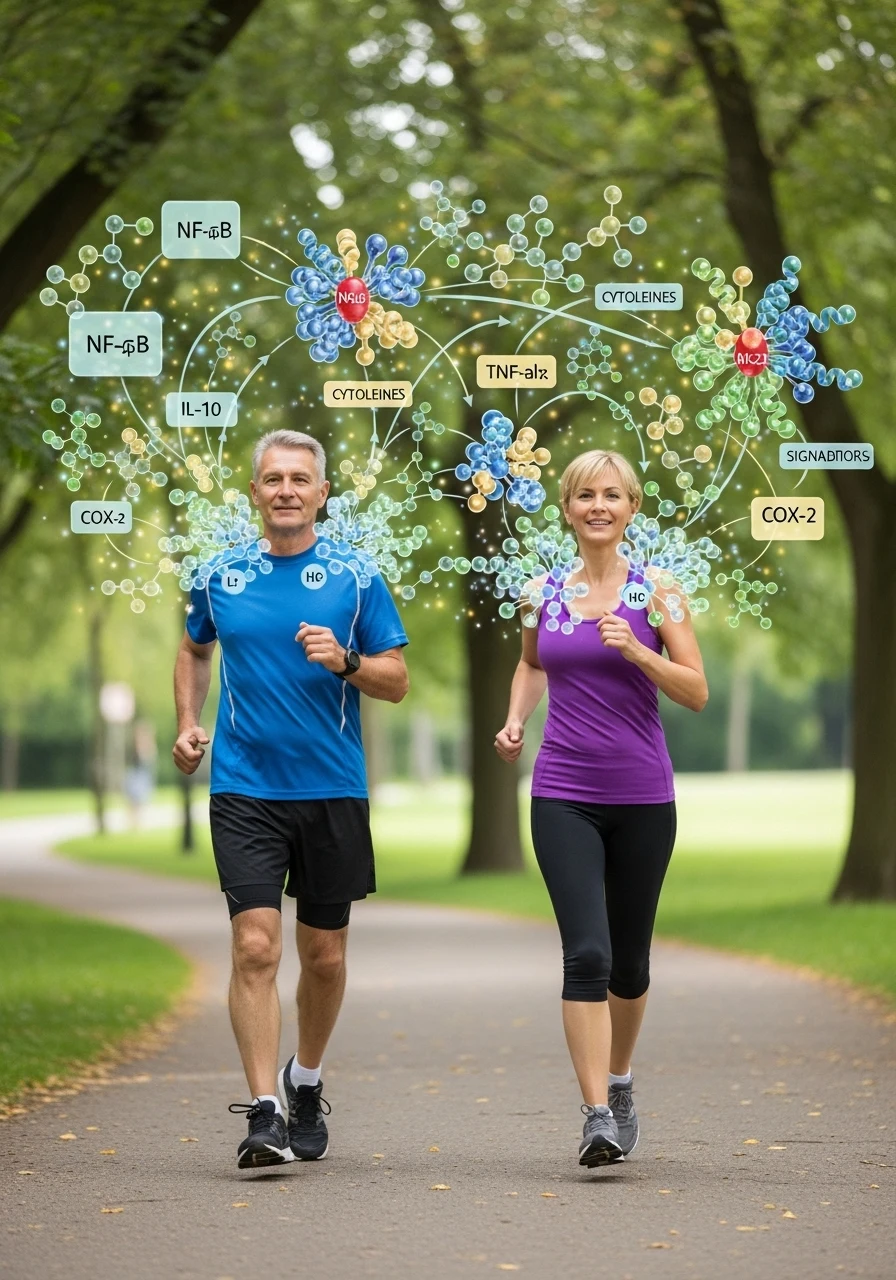
Table 1. Practical application of combinations
| Target group | Symptoms / Condition | Recommended combination | Expected effect |
|---|---|---|---|
| People over 40 | Fatigue, elevated CRP markers | Curcumin + Omega-3 + Selenium | Reduction of cytokine levels |
| Patients with metabolic syndrome | Insulin resistance, steatosis | Berberine + Quercetin + Resveratrol | Improved insulin sensitivity |
| People with chronic stress | Insomnia, inflammation, elevated cortisol | Omega-3 + EGCG + Magnesium | Stabilization of the HPA axis |
| Post-infections / post-COVID | Prolonged fatigue, brain fog | Curcumin + Glutathione + Vitamin D3 | Restoration of antioxidant balance |
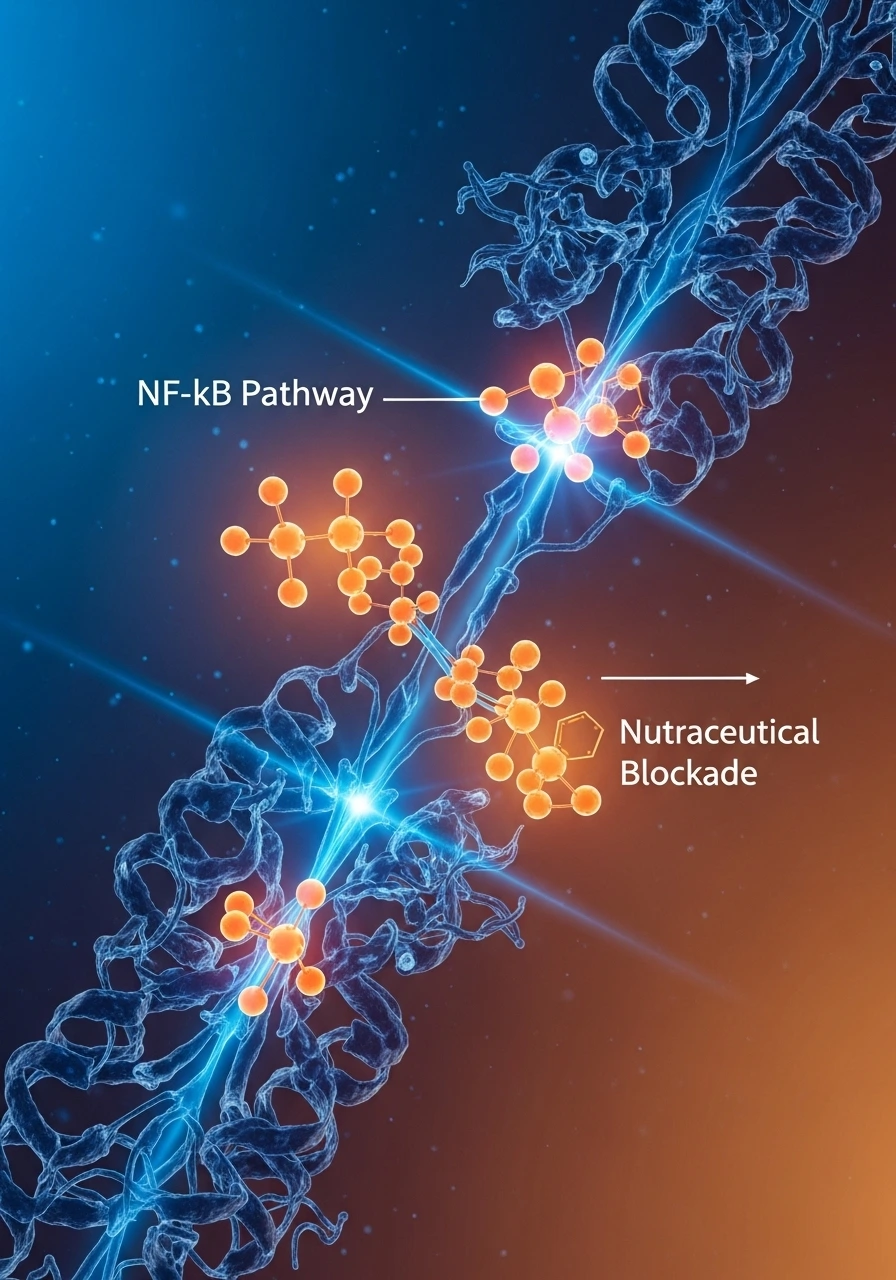
Questions and Answers
1. How is inflammaging different from classical inflammation?
It is a slow, subclinical process without obvious symptoms, but with ongoing cellular damage.
2. Can the level of microinflammation be measured?
Yes — using biomarkers CRP, IL-6, TNF-α, MCP-1.
3. Does curcumin in capsules help?
Yes, but a form with enhanced bioavailability is needed (phytosomes, microencapsulated curcumin).
4. Can Omega-3 be combined with anticoagulants?
With caution — high doses may enhance the anticoagulant effect.
5. How quickly can results be expected?
With regular intake — biomarker improvements can be seen in 4–8 weeks.
Conclusions
Inflammaging is not a verdict, but a call to action.
Regular consumption of nutraceutical anti-inflammatory modulators allows slowing down aging, improving metabolic health, and supporting cellular balance.
The key is in balancing antioxidants, fatty acids, and polyphenols.
References
-
Franceschi C. et al. Nature Reviews Immunology, 2024 — “Inflammaging: mechanisms and interventions.”
-
Calder P. C. Nutrients, 2025 — “Omega-3 fatty acids and resolution of inflammation.”
-
Aggarwal B. B. Frontiers in Pharmacology, 2023 — “Curcumin and NF-κB inhibition.”
-
Li, Y. et al. Antioxidants, 2024 — “Quercetin in chronic inflammation.”
-
Navas-Carretero S. Aging Cell, 2025 — “Nutraceutical modulation of inflammaging.”



